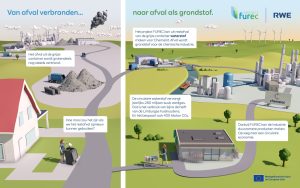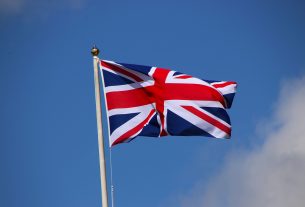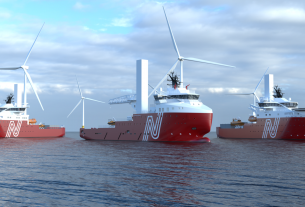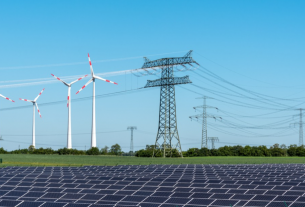The energy and resource transitions are inextricably linked. But, while the energy transition is in the spotlight and the number of hydrogen policies and projects is steadily increasing, the resource transition remains in the background. This is now slowly changing, but there are still many technical and non-technical hurdles to overcome for making commodities circular.
In the Sustainable Carbon Directive, the European Commission expresses the ambition to use at least 20% non-fossil raw materials in the production of chemicals and plastics by 2030. The question is where these non-fossil raw materials should come from.
There are three options for the sustainable production of new carbon: circular from waste plastics, biobased raw materials or reuse via CCU.
In order to recycle plastics sustainably and at high quality, it is important to involve the entire value chain in this, according to Jasper Meijering of the Clingendaeal International Energy Program(CIEP). ‘It starts at the front end with process efficiency and tight waste regulation that emphasizes more mechanical recycling and less landfill. But ultimately there needs to be more focus on the products in the value chain. How do we make those products so that they are better for the environment and easier to recycle. There must also be a change in the raw materials used. That is the area of feedstock transition. There are many types of feedstock and processes. Plastic and chemical waste can be converted back into feedstock via pyrolysis or gasification and added to the value chain.’
In the Netherlands and Belgium, the large chemical and industrial clusters each interpret this energy and raw material transition in their own way depending on their geographical and industrial history.
System Solution
Chemelot has an extensive chemical cluster but, unlike the clusters located on the coast, it does not have access to large amounts of green hydrogen generated from wind energy or imported.
FUREC (Fuse Reuse Recycle) a project of RWE can play a role here as a supplier of circular feedstock, replacing (part of) natural gas and naphtha. Through FUREC, non-recyclable municipal waste, which is now offered for incineration or landfill, is fully recycled at the Zevenellen site. Here, waste is turned into pellets that are shipped to Chemelot where they are processed into green hydrogen.

FUREC produces more than 50,000 tons of green hydrogen per year in this way. This is comparable to the capacity of a small methane cracker. Simultaneously, about 800,000 tons of pure CO2 are produced for large customers on the Chemelot site. Depending on customer demand, according to Denis Aarssen, project director of FUREC, hydrogen and CO2 can also be converted to methanol or ethanol in a tracking plant, as feedstocks for olefins, gasoline and kerosene.
‘By refining raw materials, FUREC prevents the unnecessary burning of about 700,000 tons of molecules per year, saves about 280 million cubic meters of natural gas and delivers a CO2 reduction of about 400,000 tons per year. This makes FUREC an important link in making Chemelot more sustainable,’ Aarssen concludes.
‘FUREC can also process residual streams from site users at Chemelot, but also at Zevenellen, which are currently being incinerated or dumped. Because the business parks consist of companies that are closely related to each other, synergies can be achieved. Our customers are primarily the chemical plants at Chemelot. After all, they need raw material for the synthesis of fertilizers and plastics.’
For other clusters in the Netherlands and beyond, Aarssen says FUREC is also an interesting option for sustainability. ‘FUREC is a “system solution.” In principle, it can play a similar role on any major chemical cluster as a supplier of feedstock to replace fossil. FUREC essentially produces syngas, which as an intermediate is suitable for the production of olefins and transportation fuels as well as nitrogen compounds (fertilizers and nylons). We are also making preparations for connections to the various infrastructure projects (the so-called “backbones”) to be able to supply other parties outside Chemelot with hydrogen and CO2 as well.
Industrial symbiosis
In Groningen Seaports, the starting point is completely different. Due to the many offshore wind farms off the coast, the Eems Delta is growing into Europe’s new hydrogen hub. There are big plans for electrolyzers in the Eems Delta to supply the Netherlands with green hydrogen. There are also plans in Delfzijl for more local electrolyzers producing hydrogen to power local initiatives and building blocks for the chemical industry.
The area also has chains for the circular use of raw materials. This involves two tracks, according to Heleen van Wijk, business manager for circular economy at Groningen Seaports. ‘First, we are focusing on biobased raw materials. With our agricultural hinterland, that makes sense. But if you only focus on biobased, it will be a major challenge to become fully circular. There is still a lot of fossil plastic and that will remain so for a long time. We are therefore focusing on both mechanical and chemical plastic recycling into semi-finished and end products.’
Value chains are created on the basis of material flows. Here, according to Van Wijk, there are many crossovers between the energy transition and the circular economy. ‘In terms of materials, this can be seen in a project for recycling the blades of offshore wind turbines. All partners in the chain are in the project. Some of the recovered raw materials are interesting for the construction sector but higher-grade composites, the fibers, are interesting for the automotive industry in Emmen. The same goes for the recycling of batteries that are essential for the energy transition. We are looking at circular processing at the end of life.
According to Van Wijk, many companies are coming forward to establish themselves in the Northern Netherlands. ‘For each initiative, we weigh up whether it fits into our circular strategy. In doing so, we pay attention to industrial symbiosis, and we are already far along in that regard.’
Connections
The port area around Antwerp plays a key role in the import of green hydrogen and hydrogen carriers such as ammonia and methanol. This gives Port of Antwerp Bruges important sources for future sustainable raw materials. Synthesis of methanol, ammonia, ethanol or CO2 combined with green hydrogen can produce synthetic renewable raw materials. There is also a role for bio-based raw materials, recycling and the reprocessing of substances into primary raw materials.
‘We are working on all circular forms. I don’t think it will be clear in the short term which one will win out in the resource transition,’ states Jessica Gerritsen, Port area development Expert in Antwerp. ‘We believe in a hybrid system where there will also continue to be admixture of fossil.’
The circular hotspot in the port of Antwerp is the NextGen District. Here, among others, the American company Plug Power is building a 100MW green hydrogen plant. ‘Many companies are coming forward to locate here but we are selective,’ Gerritsen said. ‘In our selection we look at the circular strategies of the Antwerp chemical companies and how we can facilitate them. We do this on the basis that we convert waste into raw materials. For us, recycling is not fuel production but raw material production! We try to help companies in the cluster get rid of fossil raw materials with this.’
In accelerating the raw materials transition, Antwerp is looking at cooperation and exchange with other clusters such as Chemelot. ‘We have good connections with Europe both for the supply and removal of feedstock for reprocessing. But the quantities of feedstock needed to make the raw material transition differ enormously from what we can produce locally or in the port area. We are looking at imports but also exchanges with other clusters.’
Waste legislation
How the raw materials transition will develop is currently still a question. The industry clusters involved do agree on a number of preconditions that are important to accelerate the transition. This mainly revolves around clear national, European or international laws and regulations.
For example, recognition of chemical recycling as a proven technology to unlock the enormous potential for refining and reuse is absolutely essential, according to Denis Aarssen.
‘Equate thermal recycling of residual streams with the successful processing processes for recycled glass, paper and metals. Of course repair and use of 2nd hand material is important, but ultimately this leads at most to postponing rather than avoiding “end of life” of each product. Through thermal recycling, much larger waste volumes can be converted into new raw materials. This results in a significant reduction in fossil resources and a reduction in the amount of waste to be incinerated. Furthermore, this will also reduce the dependence on imports of raw materials from abroad.’
To achieve this, according to Aarssen, municipalities must tender their waste in a different way that looks more at circularity and CO2 savings.
Jessica Gerritsen endorses this call. ‘It is necessary, she says, to have clear waste legislation that prevents, at the front end of the chain, the incineration of waste that can serve as a feedstock.’
According to all parties involved, it is now up to the EU, NL, regional and local politicians to ensure that companies have the right context, including infrastructure, to make investment decisions.




